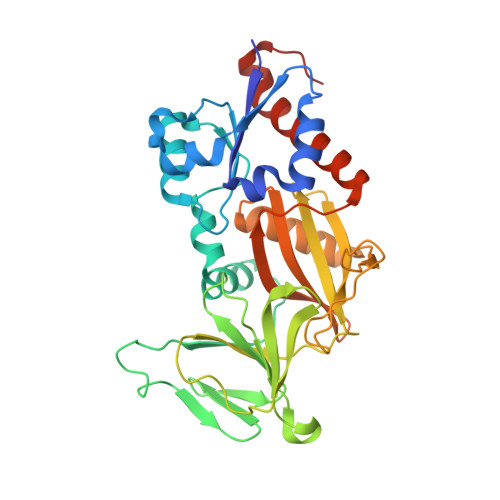Cellular Cations Control Conformational Switching of Inositol Pyrophosphate Analogues.
Hager, A., Wu, M., Wang, H., Brown, N.W., Shears, S.B., Veiga, N., Fiedler, D.(2016) Chemistry 22: 12406-12414
- PubMed: 27460418
- DOI: https://doi.org/10.1002/chem.201601754
- Primary Citation of Related Structures:
5DGH, 5DGI - PubMed Abstract:
The inositol pyrophosphate messengers (PP-InsPs) are emerging as an important class of cellular regulators. These molecules have been linked to numerous biological processes, including insulin secretion and cancer cell migration, but how they trigger such a wide range of cellular responses has remained unanswered in many cases. Here, we show that the PP-InsPs exhibit complex speciation behaviour and propose that a unique conformational switching mechanism could contribute to their multifunctional effects. We synthesised non-hydrolysable bisphosphonate analogues and crystallised the analogues in complex with mammalian PPIP5K2 kinase. Subsequently, the bisphosphonate analogues were used to investigate the protonation sequence, metal-coordination properties, and conformation in solution. Remarkably, the presence of potassium and magnesium ions enabled the analogues to adopt two different conformations near physiological pH. Understanding how the intrinsic chemical properties of the PP-InsPs can contribute to their complex signalling outputs will be essential to elucidate their regulatory functions.
Organizational Affiliation:
Department of Chemistry, Princeton University, Washington Rd., Princeton, New Jersey, 08544, USA.



















